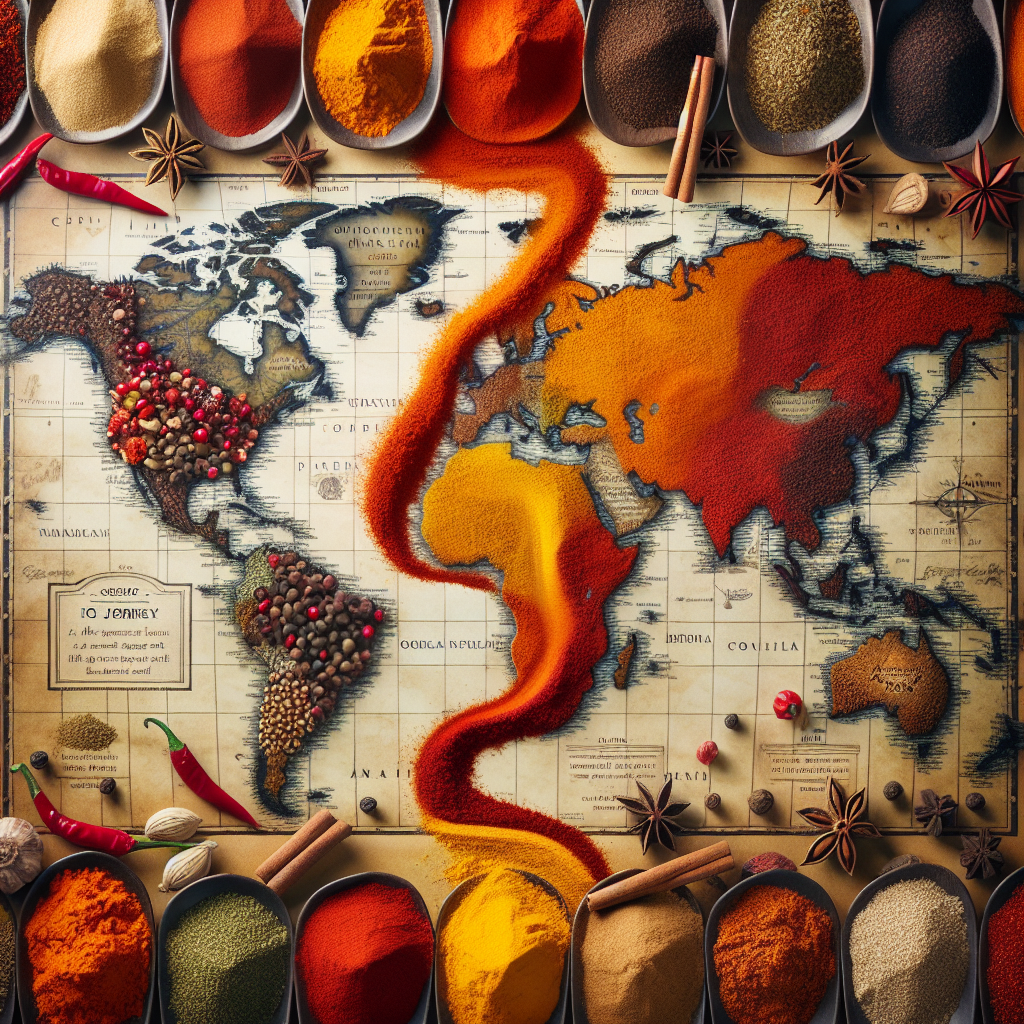Spices have been the heart and soul of culinary traditions for centuries, transcending geographical boundaries and cultural differences. From the fiery chilies of Mexico to the aromatic saffron of Iran, each spice tells a story rich in history, trade, and the intricate tapestry of flavors that shape our global kitchen. Join us on a journey to explore the diverse world of spices and their unique contributions to global cuisines.
The Origins of Spices
Historically, spices were considered precious commodities, often worth their weight in gold. The Spice Trade, which flourished from ancient times through the Middle Ages, linked distant regions and fostered cultural exchanges. Spices like black pepper, cinnamon, and cloves traveled from their native lands to Europe and beyond, influencing cooking techniques and flavor profiles.
A World of Flavor Profiles
1. Asian Spices
Cumin and Coriander
Widely used in Indian and Middle Eastern cuisines, cumin seeds provide a warm, earthy flavor, while coriander adds a citrusy note. Together, they create a foundation for dishes like curries, salads, and even baked goods.
Turmeric
Renowned for its health benefits and vibrant yellow color, turmeric is a staple in South Asian cooking. Its slightly bitter taste can enhance vegetable dishes, rice, and soups.
2. African Spices
Berbere
Ethiopian cuisine showcases the spice blend berbere, which combines chili peppers, garlic, ginger, and various spices to produce a robust flavor. It is essential in dishes such as doro wat, a spicy chicken stew.
Ras el Hanout
This Moroccan spice blend often contains over a dozen spices, including cardamom, nutmeg, and paprika. It is a versatile addition to tagines, grilled meats, and vegetable dishes, offering a fragrant and complex flavor.
3. European Spices
Saffron
Known as the world’s most expensive spice, saffron is harvested from the Crocus sativus flower. It imparts a unique color and subtle flavor to dishes such as paella in Spain and risotto in Italy.
Thyme and Oregano
Herbs like thyme and oregano are essential in Mediterranean cooking, bringing earthy flavors to dishes like ratatouille and marinades for grilled meats.
4. The Americas
Chilies
From the smoky chipotle of Mexico to the earthy pimento of Jamaica, chilies are a cornerstone of Latin American cuisine. They range from sweet to fiery, adding complexity to salsas, stews, and marinades.
Allspice
Native to the Caribbean region, allspice combines the flavors of cinnamon, nutmeg, and cloves. It’s a key ingredient in jerk seasoning and adds warmth to desserts and savory dishes alike.
The Health Benefits of Spices
Beyond their contributions to flavor, many spices boast significant health benefits. Turmeric, for instance, has anti-inflammatory properties, while ginger can aid digestion. Incorporating a variety of spices into meals not only enhances taste but also promotes well-being.
Conclusion: The Spice of Life
Exploring the spices of the world is more than a culinary adventure; it’s a journey through culture, history, and community. By embracing these global flavors, we celebrate our shared humanity and the unique traditions that spice up our lives. Whether you’re a seasoned cook or a curious beginner, the world of spices invites you to experiment, discover, and savor the myriad flavors that connect us all. So gather your spices, open your mind, and embark on a delicious journey that spans the globe!

